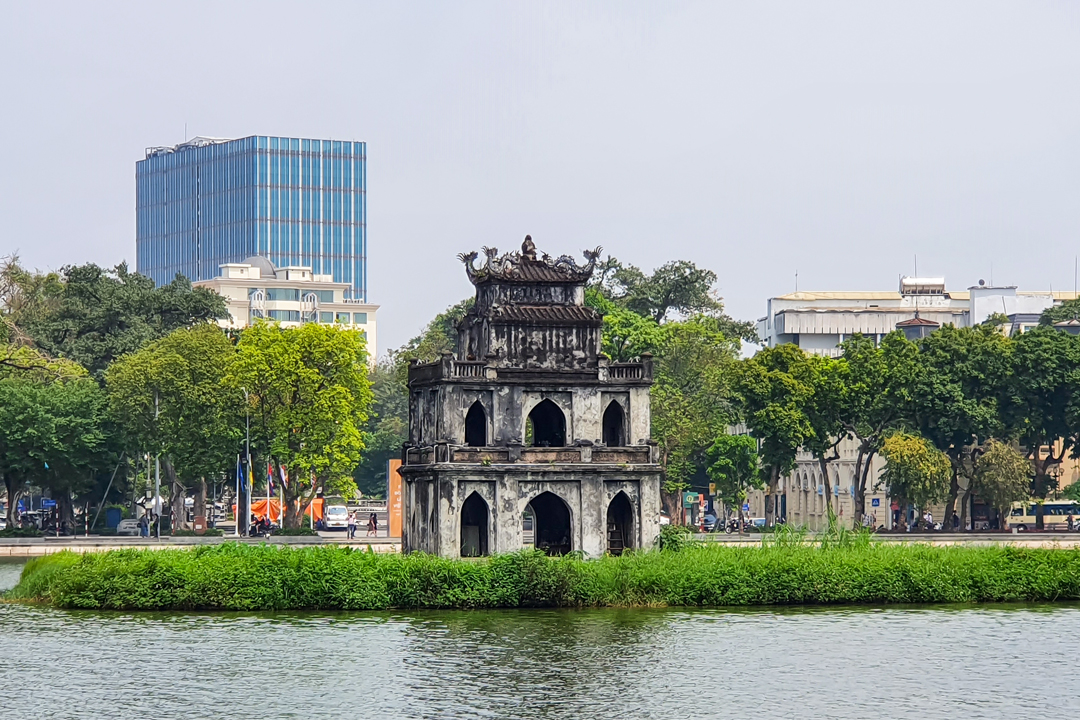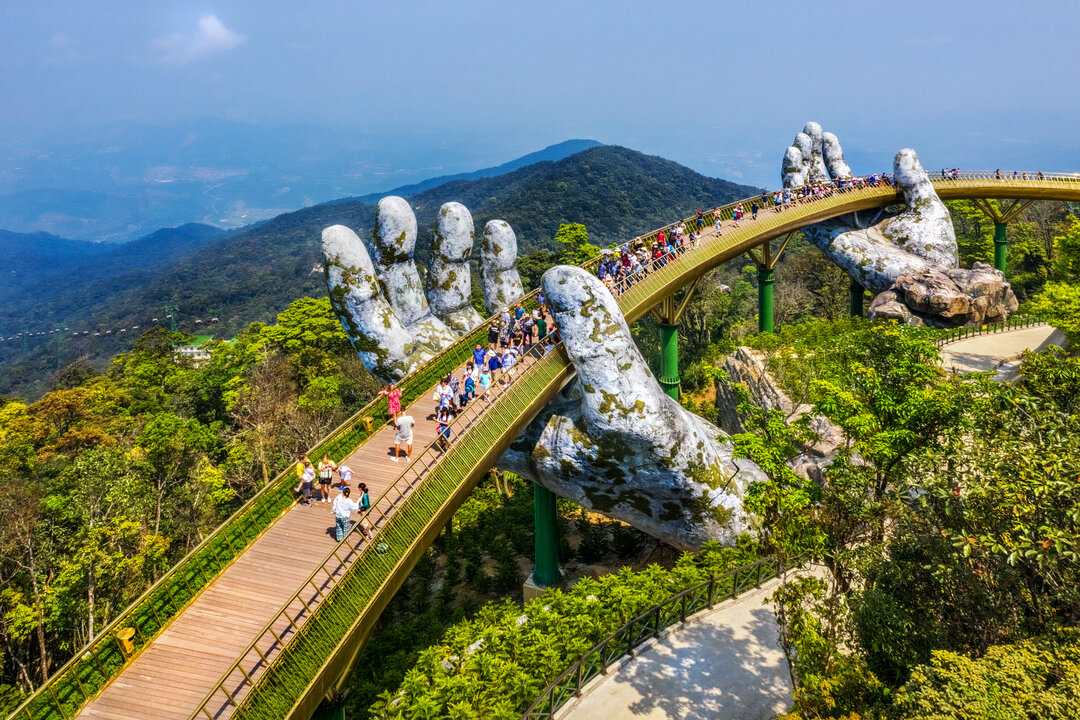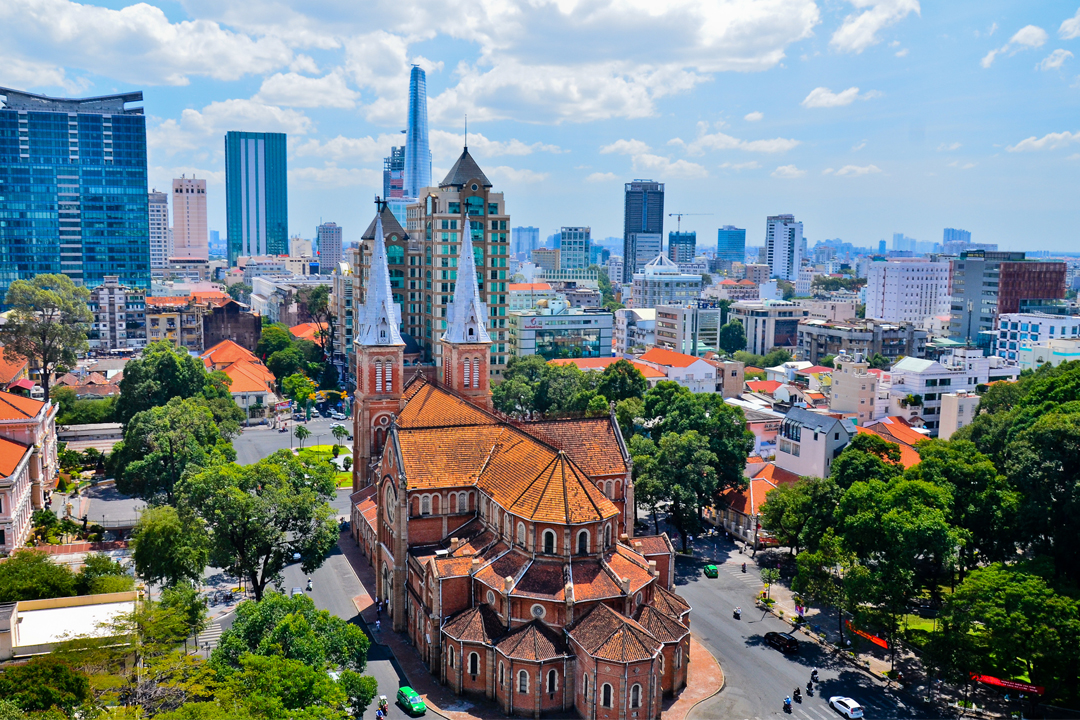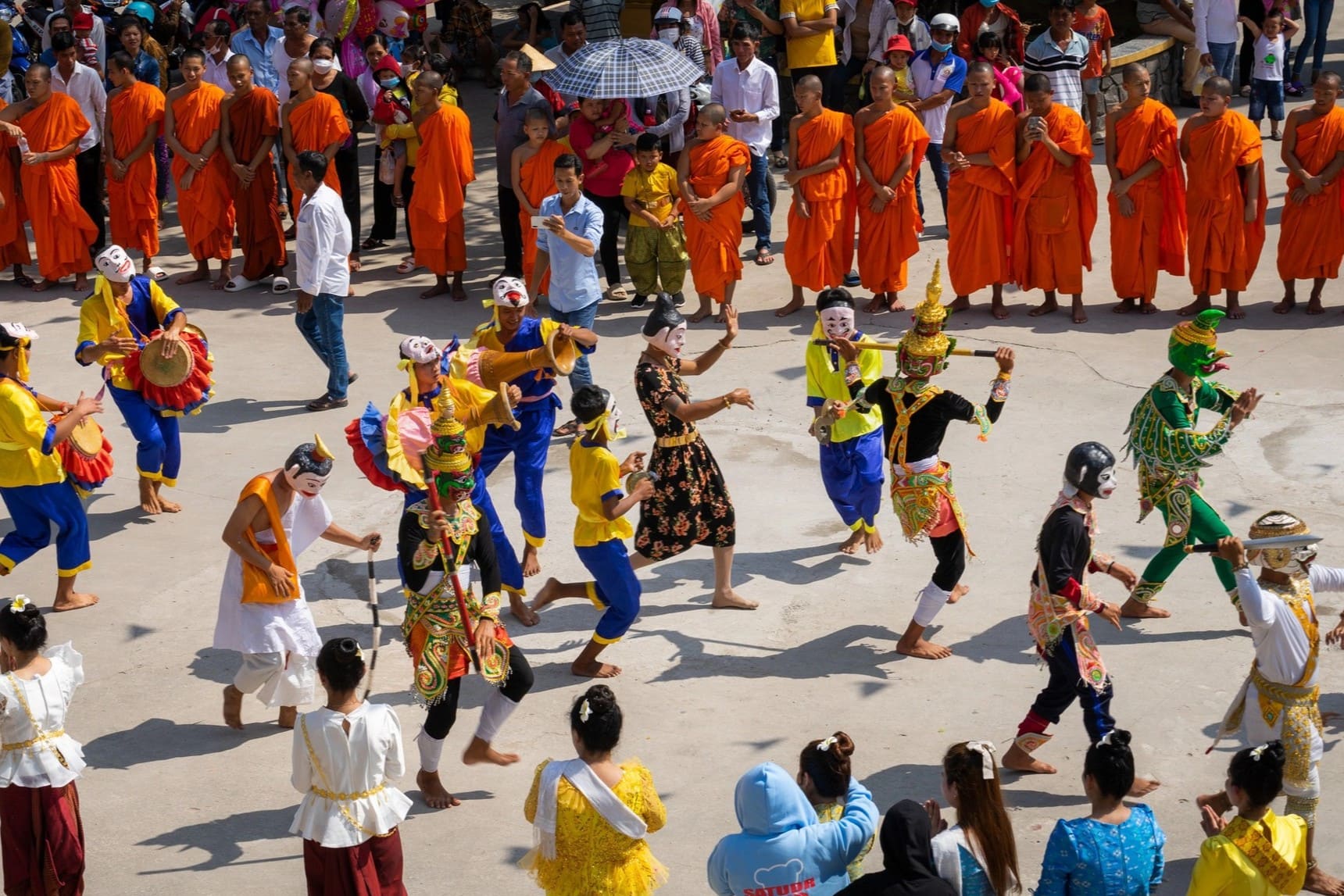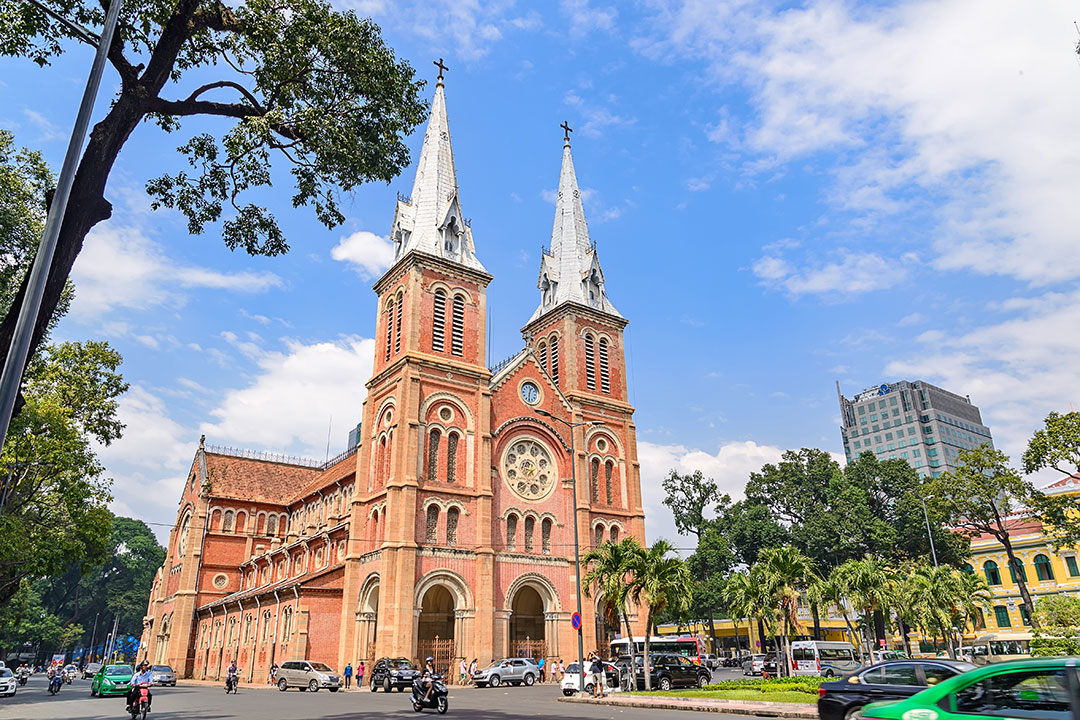Notre Dame Cathedral Of Saigon: History, Things To See & Travel Guide
The Notre Dame Cathedral of Saigon is located at 01 Paris Commune Square, Ben Nghe Ward, District 1, Ho Chi Minh City. This cathedral rises with quiet grandeur, a lasting symbol of French colonial influence in Vietnam. The building’s Romanesque and Gothic elements blend seamlessly, offering a visual journey through European ecclesiastical architecture adapted to a Southeast Asian setting. For decades, it has drawn the attention of photographers, artists, and history buffs, each captivated by its symmetrical facade and timeless design.
Yet the significance of the Notre Dame Cathedral goes far beyond its visual appeal. It has served as a spiritual anchor for the local Catholic community for nearly 150 years, hosting daily prayers and well-attended Sunday services in both Vietnamese and French. The site also tells a broader story of resilience and cultural convergence, especially during its current restoration, a complex project that involves both international experts and local artisans. This guide of GTrip lets you explore the history, things to see, to do and travel guide of Notre Dame Cathedral of Saigon.
History of Notre Dame Cathedral Basilica of Saigon
The Notre Dame Cathedral Basilica of Saigon is an iconic landmark in Ho Chi Minh City, reflecting the era of French colonialism in Vietnam. Its construction began in 1863 under French colonial powers, but the current building was designed by architect J. Bourard and constructed from 1877 to 1880. The cathedral's foundation stone for the earlier wooden structure was laid on March 28, 1863, marking the beginning of what would become an iconic representation of colonial architecture. This earlier wooden church, built on the bank of the Charner Canal (Kinh Lon), was damaged by termites, leading to the construction of the more durable Notre Dame Cathedral we know today.
The cathedral was not only a place of worship but also a symbol of the cultural and religious imposition of French rule during that period. It represented the French ambition to establish a spiritual foothold, accentuating the intersection of Western architecture and local cultural dynamics. This blend is a tangible reminder of the city’s colonial past, offering rich insights into the socio-political landscape of the time. The cathedral's design was influenced by French cathedrals such as Notre-Dame de Paris, evident in its facade and interior design, featuring elaborate stonework and stained glass.
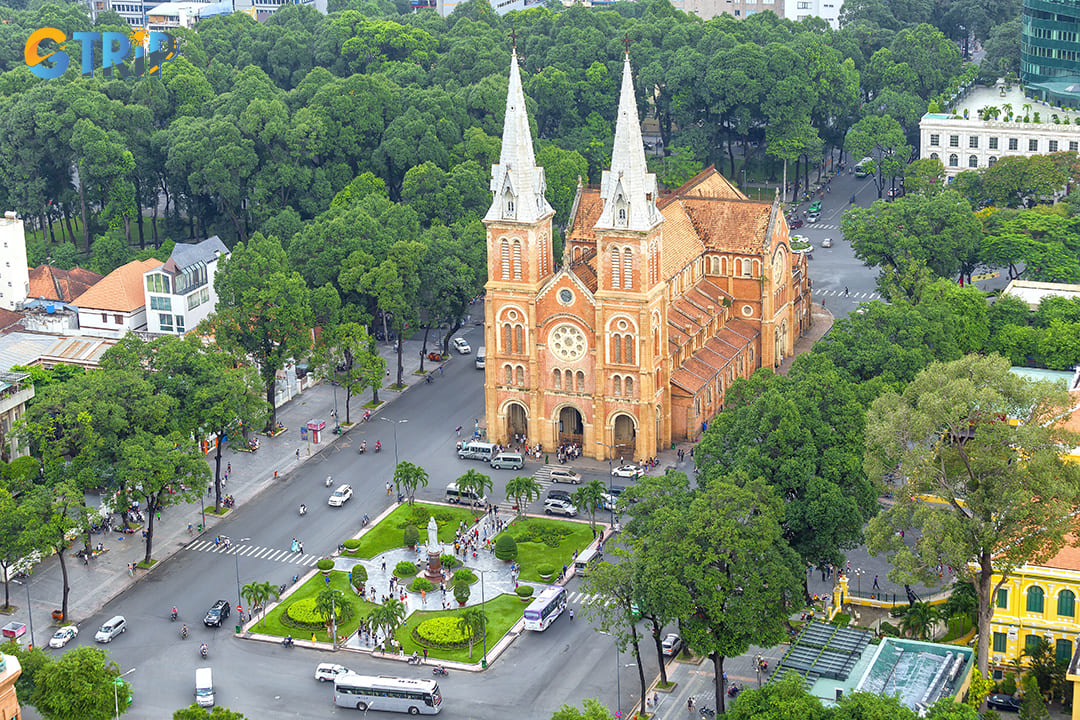
The Notre Dame Cathedral Basilica of Saigon is an iconic landmark in Ho Chi Minh City, reflecting the era of French colonialism in Vietnam
French colonial influence transformed Vietnam's architectural scene, leaving a permanent mark, as demonstrated by the Notre Dame Cathedral. The French used architecture as a tool to project power and cultural dominance. This period saw the introduction of Western architectural principles combined with local adaptations. Structures like the Notre Dame Cathedral became a vital part of the urban fabric, influencing city planning and architectural styles that extended beyond religious buildings.
Throughout the years, the Notre Dame Cathedral has borne witness to various significant historical events and transformations. During the colonial era, it hosted numerous official ceremonies and was a center for religious activities under French governance. After Vietnam gained independence, the cathedral represented resilience, maintaining its role as a place of worship and community gathering despite political changes. In recent years, the cathedral has undergone several restoration phases to preserve its integrity and historical value. They focus on repairing its iconic stained-glass windows, stone walls, and twin towers. These initiatives have garnered international attention, highlighting the cathedral's dual role as a national treasure and a testament to colonial history.
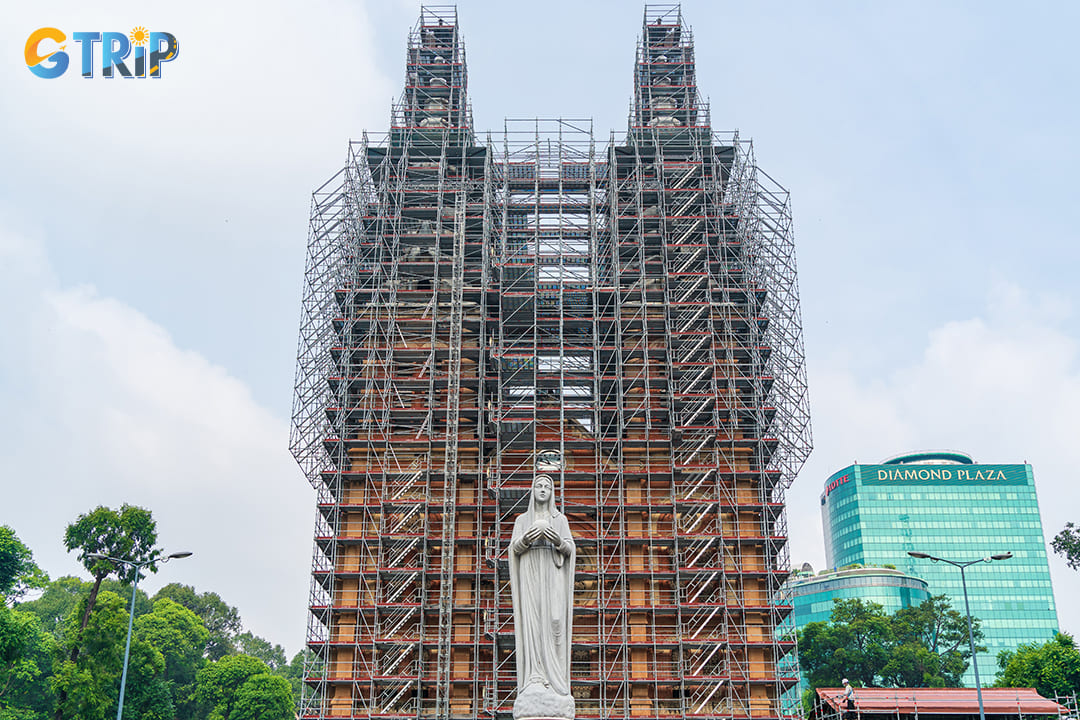
In recent years, the cathedral has undergone several restoration phases to preserve its integrity and historical value
Things to see when visiting the Notre Dame Cathedral Basilica of Saigon
Notre Dame Cathedral Basilica of Saigon is a prominent architectural landmark in Ho Chi Minh City, reflecting a blend of Romanesque and Gothic styles. The cathedral was designed by French architect Jules Bourard and constructed between 1877 and 1880. Here are the main architectural features to explore:
Exterior architecture
The exterior of the Notre Dame Cathedral Basilica of Saigon is a striking example of neo-Romanesque architecture, with elements that also reflect Gothic influences. The building's facade is made from distinctive red bricks imported from Marseille, France, which maintain their vibrant color without plastering. The facade is symmetrically designed with two prominent bell towers that rise to a height of 57.6 meters, including the spires added in 1895. Each bell tower houses six bronze bells, contributing to the cathedral's historical and visual significance. The main entrance features a large Swiss-made clock from 1887, which still functions accurately. The entire structure is built without surrounding fences, making it an integral part of the city's urban landscape.
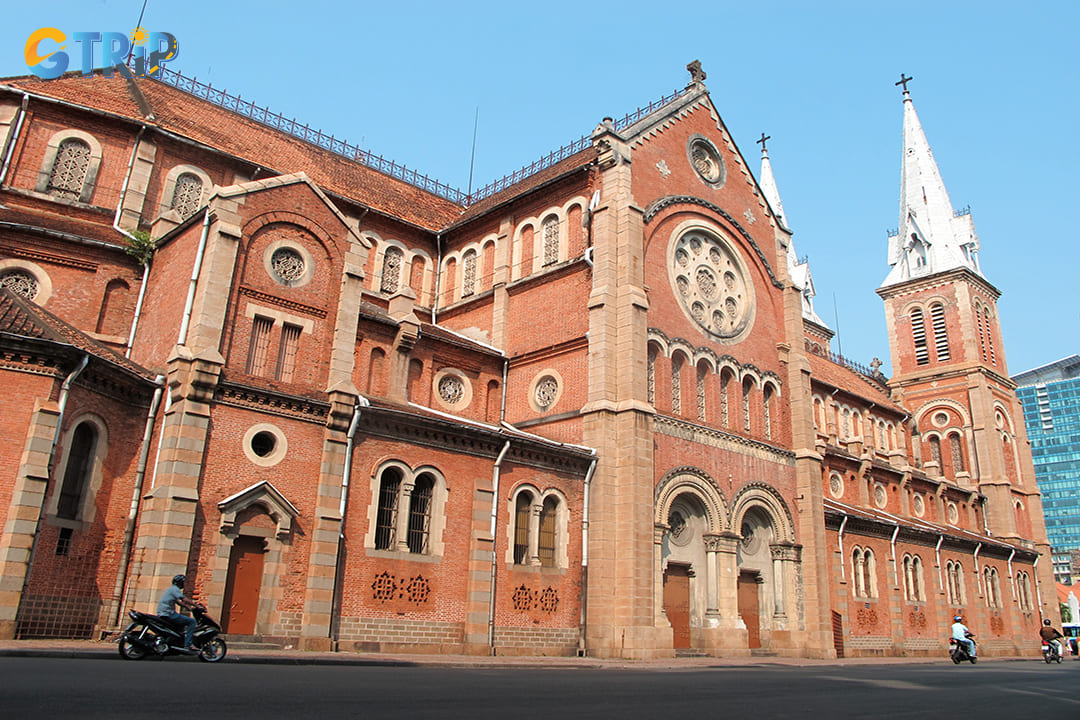
The exterior of the Notre Dame Cathedral Basilica of Saigon is a striking example of neo-Romanesque architecture, with elements that also reflect Gothic influences
Virgin Mary Statue
In front of the cathedral stands a statue of Our Lady of Peace, carved in Italy and installed in 1959. This striking 4.6-meter-tall statue is crafted from Italian white granite and depicts the Virgin Mary holding a globe with a cross. The statue adds to the spiritual ambiance of the site and has become a popular spot for photos. The statue is positioned in a small park surrounded by decorative plants and pathways, creating a serene environment for reflection.
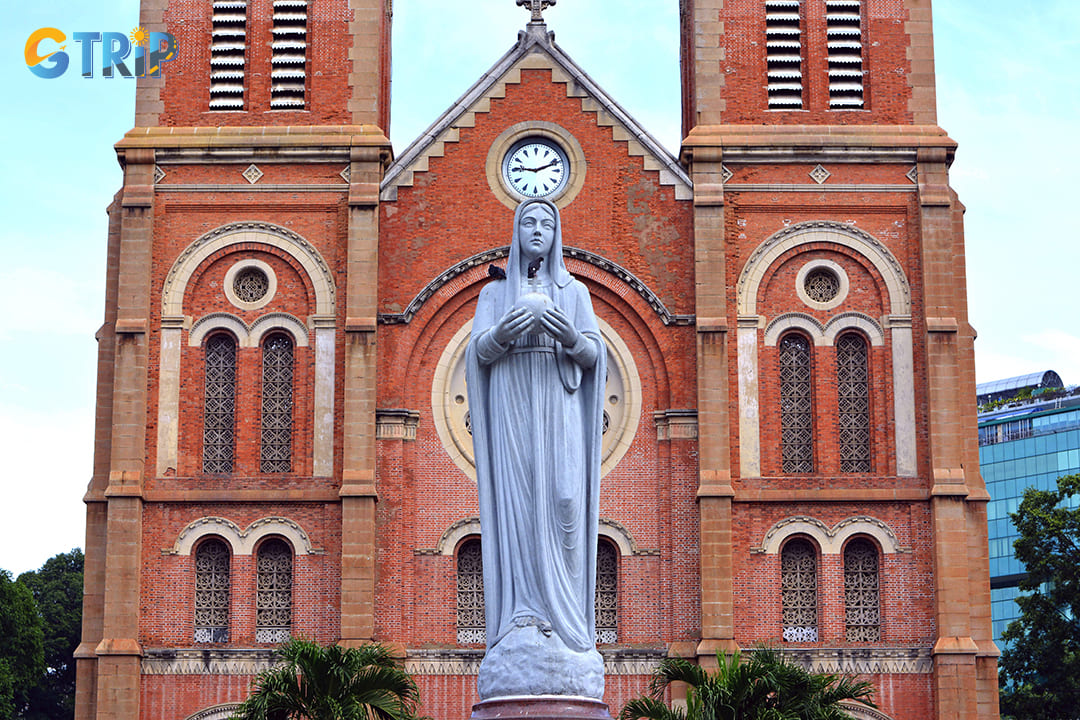
In front of the cathedral stands a statue of Our Lady of Peace, carved in Italy and installed in 1959
Bell Towers
The bell towers of the Notre Dame Cathedral of Saigon are iconic features that blend Romanesque strength with Gothic elegance. Originally 36.6 meters tall with no spires, the towers were redesigned in 1895 by architect Gardes, who added 21-meter-high pointed spires. This brought the total height to around 57 meters, giving the cathedral its signature vertical grace. Built with unplastered red bricks imported from France, the towers harmonize with the overall architecture and radiate a sense of enduring beauty.
Inside, six bronze bells cast in France in 1879 weigh nearly 30 tons in total. Each bell is finely engraved and tuned to musical notes that together create a rich harmony. They are operated by an electric motor with foot-pedal support. Nestled between the towers is a one-ton clock made in 1887, still keeping accurate time today. The design features rounded Roman arches, pointed Gothic spires, and colorful stained-glass windows, making the towers architectural landmarks.
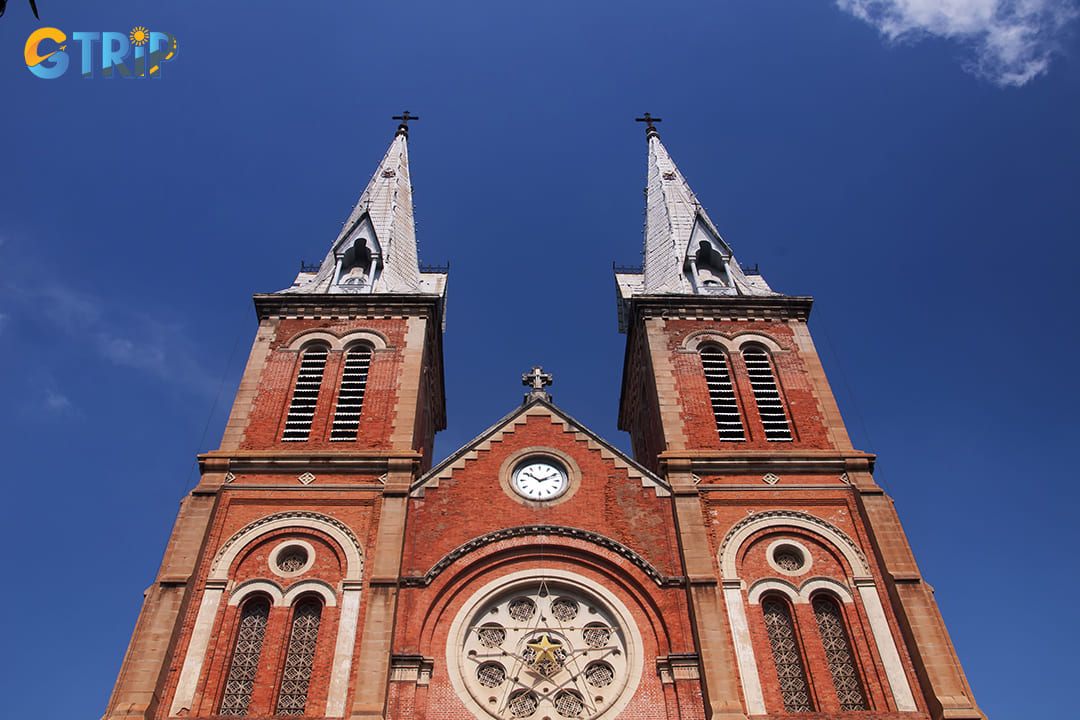
The bell towers of the Notre Dame Cathedral of Saigon are iconic features that blend Romanesque strength with Gothic elegance
Interior layout of Notre Dame Cathedral Basilica of Saigon
The interior follows the Basilica form with a central nave flanked by two aisles and five small chapels. The design combines Roman and Gothic elements, creating a sense of grandeur and tranquility. The hall measures around 91 meters in length and 35 meters in width, with the roof reaching a height of 21 meters. The interior's Roman style is evident in its simple outer walls and minimal decorations, while the high ceilings and broken arches are characteristic of classical Gothic architecture.
Stained glass windows
Inside the cathedral, you can marvel at the 56 stained glass windows, including round rose windows and bull’s-eye windows, which allow ample natural light and enhance the serene atmosphere. These windows were crafted by Lorin of Chartres Province in France and depict scenes from the Bible. However, only a few of these windows remain intact, with the rest repaired in 1949 due to damage from the war.
Main altar
The main altar is crafted from a single marble block and supported by six angels, serving as a focal point of the interior. It is surrounded by ornate stained glass windows depicting religious narratives and decorated with rose patterns. The altar's design reflects the Roman style, with simple yet elegant details that complement the overall Gothic architecture of the cathedral.
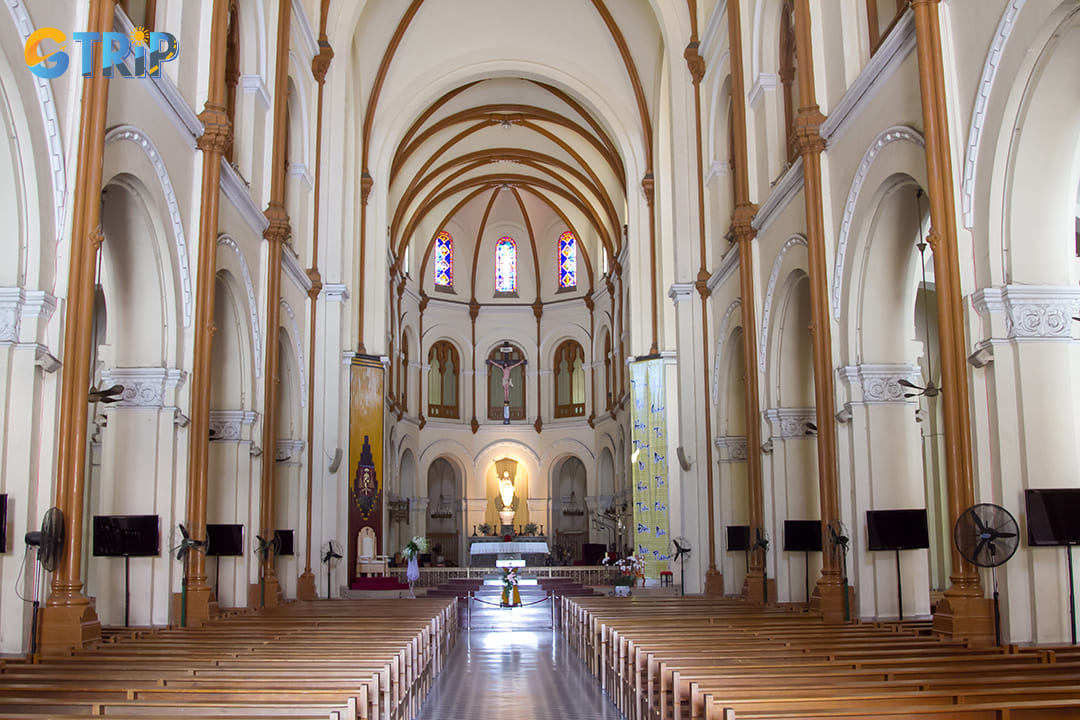
The design combines Roman and Gothic elements, creating a sense of grandeur and tranquility
Opening hours & best time to visit of cathedral
Here is information about the hours of operation and time to visit the cathedral.
Opening hours
The cathedral's exterior can be viewed at any time, but the interior is accessible only during Mass times due to ongoing renovations. The general visiting hours for the exterior are from 8 AM to 11 AM and 2 PM to 4 PM daily. For those interested in attending Mass, you can read the Mass schedules section for details.
Best time to visit
To avoid crowds and enjoy a more contemplative atmosphere, it's advisable to visit the cathedral during the early morning hours, preferably before 9 AM. This timing allows you to witness the serene environment and the golden hue of the sunrise reflecting off the cathedral's architecture. Visiting on weekdays rather than weekends can also help circumvent the throngs of people that typically gather for weekend masses and local events.
Seasonally, the dry months from December to April are ideal for visiting the cathedral, as Ho Chi Minh City experiences less rainfall, offering more predictable weather. This not only makes the overall experience more pleasant but also provides better conditions for photography. During these months, the weather is generally cooler and drier, making it more comfortable for exploring the city's attractions.
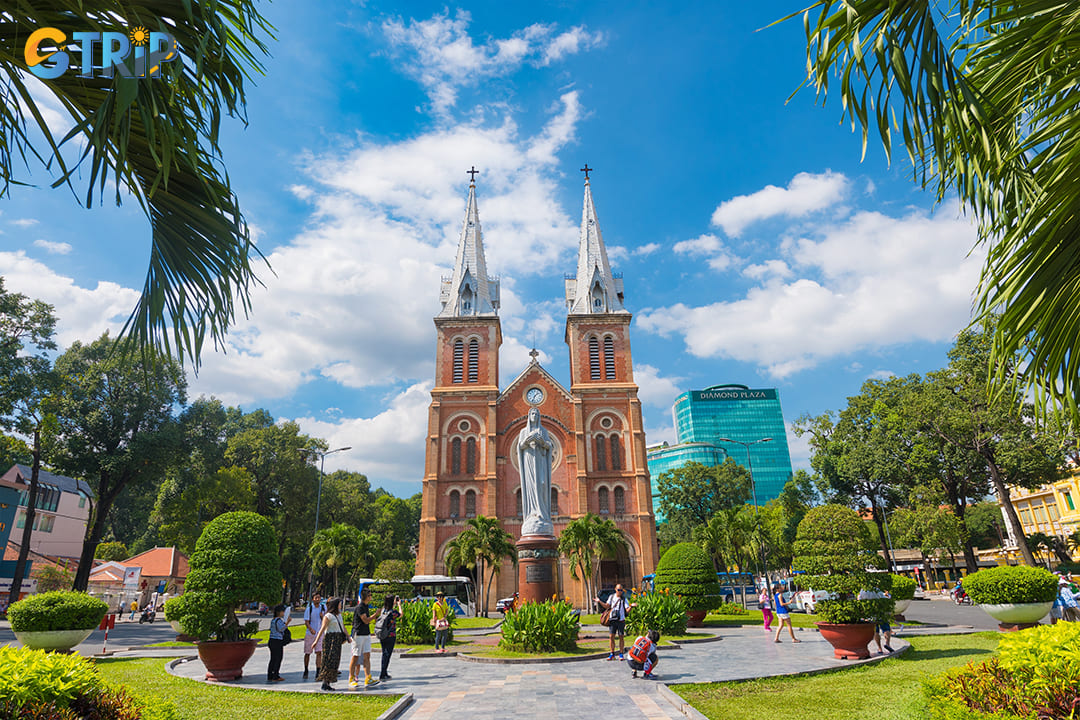
Visiting the Notre Dame Cathedral Basilica of Saigon is free for all people
Mass schedules of the Notre Dame Cathedral Basilica of Saigon
Notre Dame Cathedral Basilica of Saigon holds profound religious significance for the Catholic community in Vietnam. Serving as the episcopal see of the Archdiocese of Ho Chi Minh City, it plays a pivotal role in the spiritual life of Vietnamese Catholics and acts as a beacon of faith and religious practice.
The current mass schedules
The Notre Dame Cathedral Basilica of Saigon offers a wide range of Mass schedules to accommodate both local and international tourists. This reflects its role as a vibrant center of worship and a popular tourist attraction. While specific times may vary, here is a general outline:
- Weekday masses: Daily Mass is held at 5:30 AM and 5:30 PM.
- Saturday mass: 5:30 PM (also available online via YouTube)
- Sunday masses: 5:30 AM, 8:00 AM, 9:30 AM (English Mass), 4:00 PM, 5:30 PM, 7:00 PM
Special masses: Eucharistic Adoration
During the Holy Year, Eucharistic Adoration will take place after the evening Mass on Thursdays and Fridays, and after the morning Mass on Saturdays.
- Rosary: Thursdays at 8:00 PM (online via YouTube)
- Divine Mercy Chaplet: Fridays at 8:00 PM (online via YouTube)
Notes
- The Church is currently closed to tourists for restoration, but remains open for the faithful to attend daily Mass.
- Priests are available for confessions before and during Mass.
- Confessions are available after Mass if parishioners request it.
For the most accurate and up-to-date Mass schedules, especially during special liturgical seasons, it's advisable to check the cathedral's official website or contact the parish office.
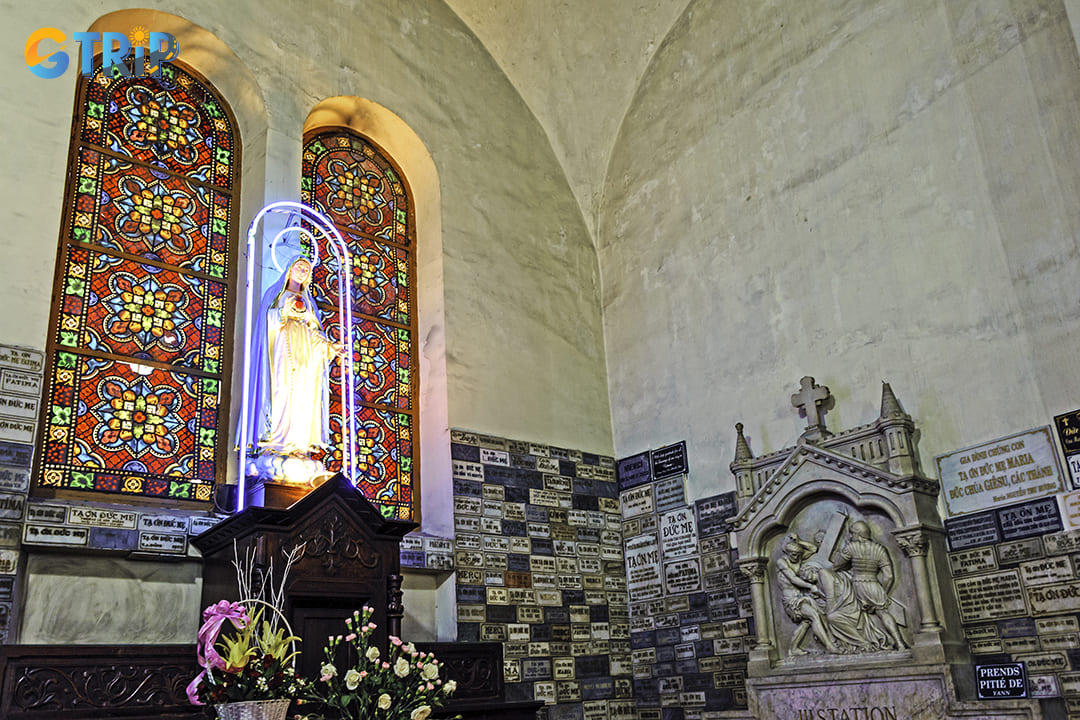
Notre Dame Cathedral Basilica of Saigon holds profound religious significance for the Catholic community in Vietnam
How to get to Notre Dame Cathedral?
Notre Dame Cathedral is centrally located in District 1 of Ho Chi Minh City, making it easily accessible by various means of transportation. Here are some detailed options to help you navigate your way there:
By taxi or ride-hailing service
Taxis and ride-hailing apps like Grab, Be, and Xanh SM are convenient and relatively inexpensive ways to reach the cathedral. Taxis can be hailed throughout the city, while ride-hailing apps offer transparent pricing and ease of use. Companies such as Vinasun Taxi and Malinh Taxi Group also provide reliable services. The journey typically takes about 3 to 4 minutes from nearby locations in District 1, costing between $5 and $7.
By public transport
The bus system in Ho Chi Minh City is extensive and economical for budget-conscious travelers. Bus numbers 03, 06, 14, 19, 30, and others run routes that stop near the cathedral. Popular bus stops include Diamond Plaza, Nhi Dong 2 Hospital, and Paris Commune, all within a short walking distance to the cathedral. The cost is generally affordable, with fares starting from around 5,000 to 10,000 VND per ride.
By bicycle or motorbike
For a more adventurous route, renting a bicycle or motorbike provides flexibility and an up-close city experience. This option allows you to explore the city at your own pace and enjoy the scenic views around District 1. Just ensure to follow local traffic rules and park in designated areas to avoid fines or inconvenience.
Regardless of the mode of transportation, visiting the cathedral provides an opportunity to immerse yourself in both the historical and contemporary heartbeat of the city. Its location is a perfect starting point for further exploration of the city's rich cultural tapestry. You can book a guided tour of GTrip, so that you don’t have to worry about how to get to the cathedral by which transportation.
By metro
You can reach Notre Dame Cathedral by metro. You should choose the Opera House station, which is the nearest metro station. After that, you can walk to the cathedral in about 3 minutes.
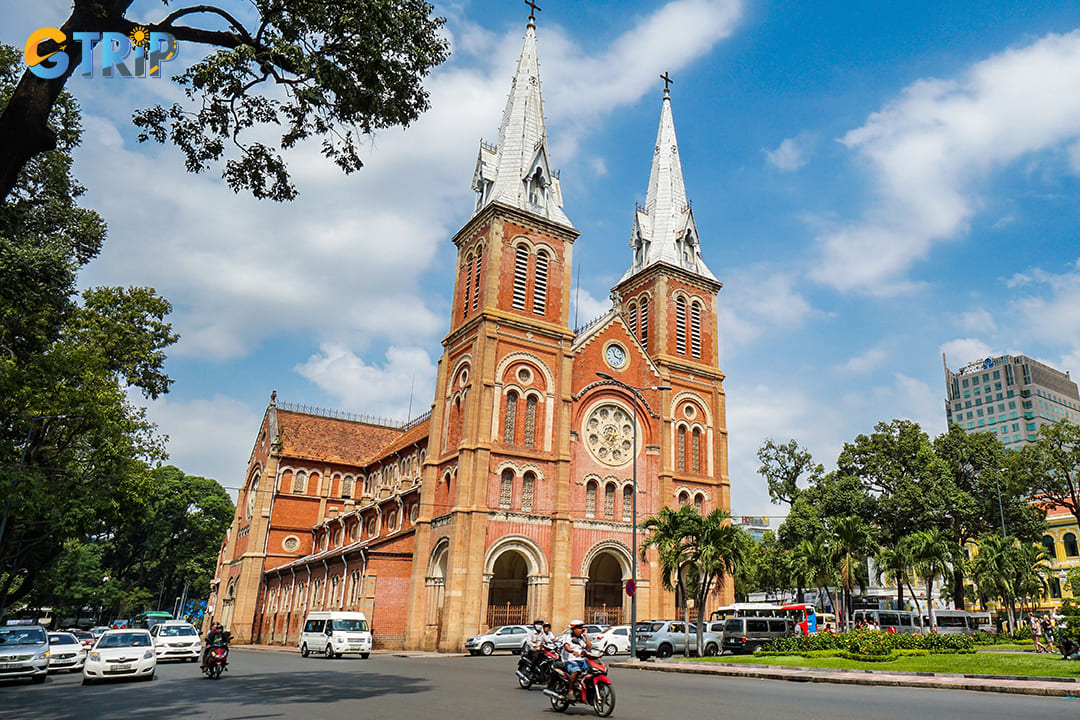
Notre Dame Cathedral is centrally located in District 1 of Ho Chi Minh City, making it easily accessible by various means of transportation
Nearby attractions from Notre Dame Cathedral
Don’t miss the opportunity to explore the intriguing attractions nearby the cathedral. These sites offer a deeper understanding of the area’s rich cultural heritage and colonial history.
Saigon Central Post Office (38 m)
The Saigon Central Post Office is just a short walk from the Notre Dame Cathedral, standing as a testament to the architectural prowess of the French Colonial period. Completed in 1891 and designed by Alfred Foulhoux, this iconic building blends Gothic, Renaissance, and French influences, offering a fascinating glimpse into Vietnam’s colonial past. The post office has witnessed remarkable historical events and remains one of the city’s most significant landmarks. Its association with the French rule exemplifies the cultural and architectural transformation that took place during colonial times.
Architecturally, the exterior features a beautifully crafted yellow facade with arched windows and a clock. The interior boasts a stunning vaulted ceiling supported by steel pillars, mirroring the Eiffel Tower’s architectural style. Murals depict historic maps of Saigon and Southern Vietnam, connecting tourists with the locale’s historical geography. As an operational post office, it provides you with the chance to send postcards from a historical location, further immersing you in the city’s vibrant past and present.
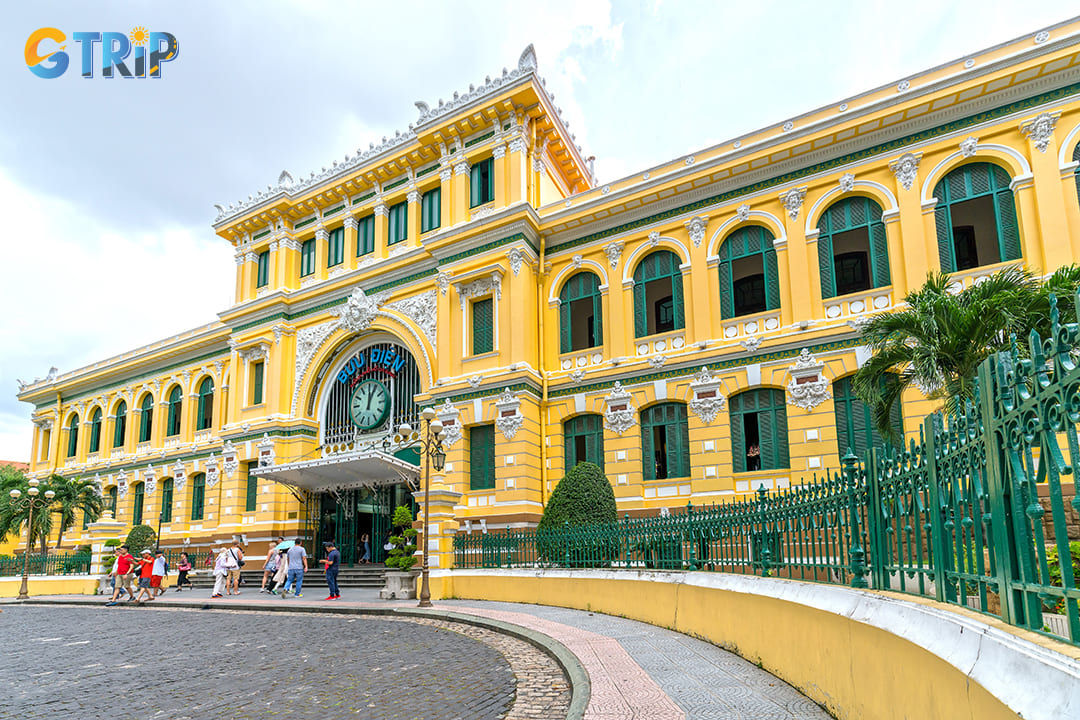
The Saigon Central Post Office is just a short walk from the Notre Dame Cathedral, standing as a testament to the architectural prowess of the French Colonial period
Reunification Palace (450 m)
A visit to the Reunification Palace, also known as the Independence Palace, is a profound journey into Vietnam’s 20th-century history. The palace was the site of the Fall of Saigon in 1975, symbolizing the end of the Vietnam War. The current building, completed in 1966, is a striking example of 1960s architecture in Vietnam. You can explore the grand halls, war command room, and the rooftop helipad, recalling the pivotal role the building played during the war. Located just a short distance from the cathedral, the palace offers a unique perspective on Vietnam's recent past and its political evolution.
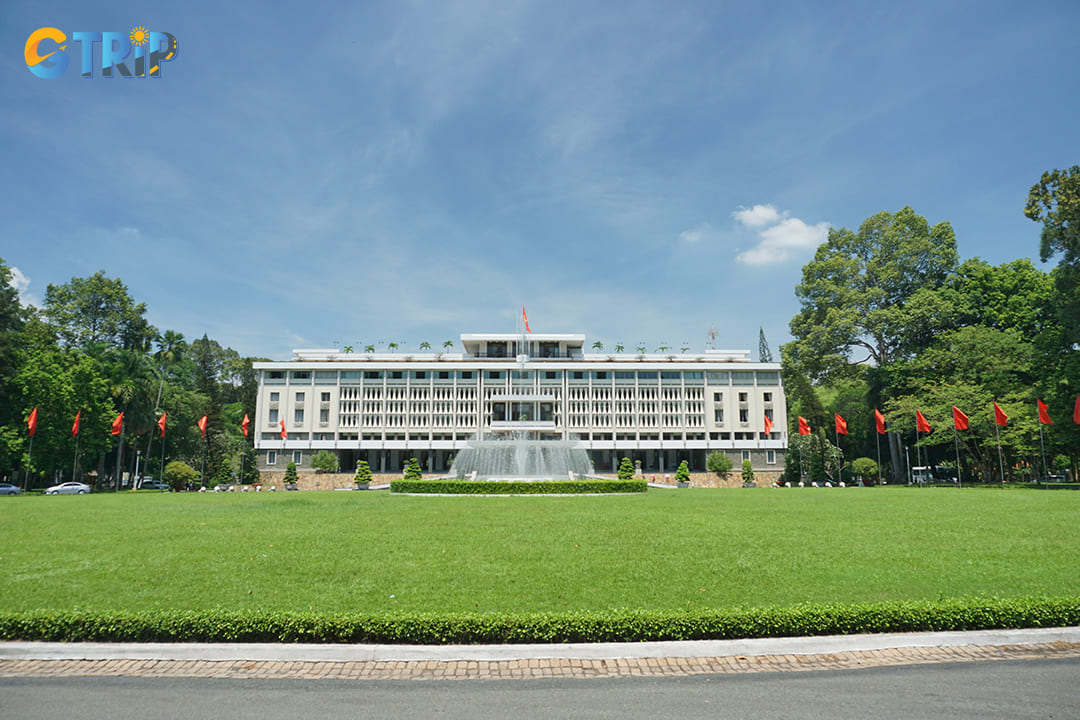
A visit to the Reunification Palace, also known as the Independence Palace, is a profound journey into Vietnam’s 20th-century history
Saigon Opera House (550m)
Just a short stroll from the Notre Dame Cathedral, the Saigon Opera House is a stunning example of French colonial architecture and a vibrant hub for the performing arts in Ho Chi Minh City. Officially known as the Municipal Theatre, it was built in 1898 by French architect Eugène Ferret, drawing inspiration from the flamboyant style of Paris’s Opera Garnier. With its ornate facade, arched windows, and intricate stone carvings, the building stands as a symbol of the city’s cultural sophistication during the colonial era.
Step inside and you’ll find a lavish interior with a seating capacity of over 500, featuring decorative motifs, grand staircases, and crystal chandeliers. The opera house continues to host a variety of cultural performances, from traditional Vietnamese music and dance to international concerts and theatrical productions. As both a historical monument and a living stage, the Saigon Opera House offers a glimpse into the city’s artistic soul and its enduring connection to European aesthetics.
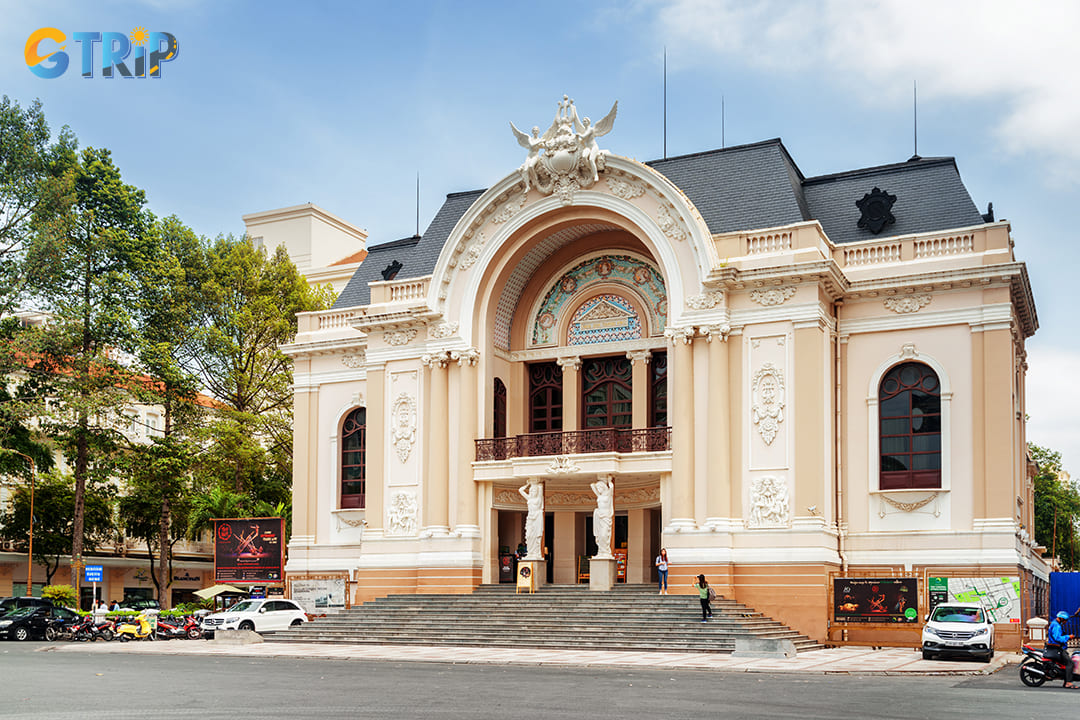
The Saigon Opera House is a stunning example of French colonial architecture and a vibrant hub for the performing arts
Ben Thanh Market (1 km)
Located about 1 km from the Notre Dame Cathedral, Ben Thanh Market is one of Ho Chi Minh City’s most iconic and bustling landmarks. Established in the early 20th century, the market reflects the vibrant spirit of Saigon and has long been a hub for trade and daily life. Its recognizable clock tower at the main entrance has become a symbol of the city itself, welcoming countless tourists each day.
Inside, you’ll find an incredible array of goods, from fresh produce, spices, and local handicrafts to textiles, souvenirs, and street food. The market offers a lively glimpse into the everyday rhythms of Saigon, where bargaining and bustling energy create an unforgettable atmosphere. Beyond shopping, Ben Thanh is a cultural experience, a place where you can sample authentic Vietnamese dishes like pho, banh xeo, or fresh spring rolls right at one of the many food stalls. A visit here promises a colorful and sensory-rich immersion into the heart of Ho Chi Minh City.
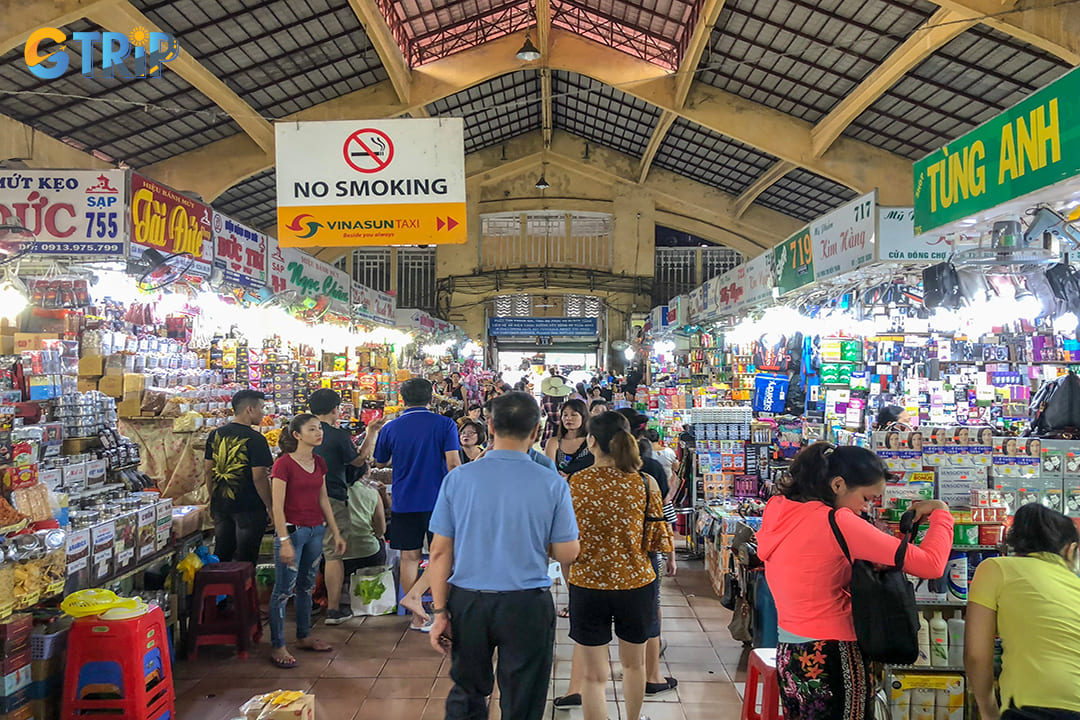
Ben Thanh Market is one of Ho Chi Minh City’s most iconic and bustling landmarks
By exploring these nearby attractions, you gain a fuller appreciation for Ho Chi Minh City’s historical complexity and cultural depth. The juxtaposition of colonial and contemporary landmarks offers nuanced perspectives on Vietnam's past and its ongoing journey of cultural integration and urban development. Through these explorations, both history enthusiasts and casual tourists can find a richer, more immersive experience in the heart of Vietnam.
Travel tips when visiting the Notre Dame Cathedral Basilica of Saigon
Here are some essential tips to enhance your visit to the Notre Dame Cathedral Basilica of Saigon:
- Photography tips: Capture the twin bell towers from a distance, use a wide-angle lens for interiors, and explore angles from the Saigon Central Post Office.
- Respecting dress code: Wear modest clothing that covers shoulders and knees to show respect for the sacred space.
- Observing religious practices: Maintain silence during services, turn off electronic devices, and avoid using flash photography inside.
- Exploring nearby landmarks: Combine your visit with the Saigon Central Post Office and Book Street for a richer cultural experience.
- Being mindful of worshippers: Allow space for prayer, avoid disrupting ceremonies, and observe local customs with respect.
- Bringing essential items: Carry water, wear comfortable shoes, and bring a hat or umbrella for protection against the heat.
By following these tips, you can have a smooth and respectful experience while appreciating the cathedral’s historical and architectural significance.
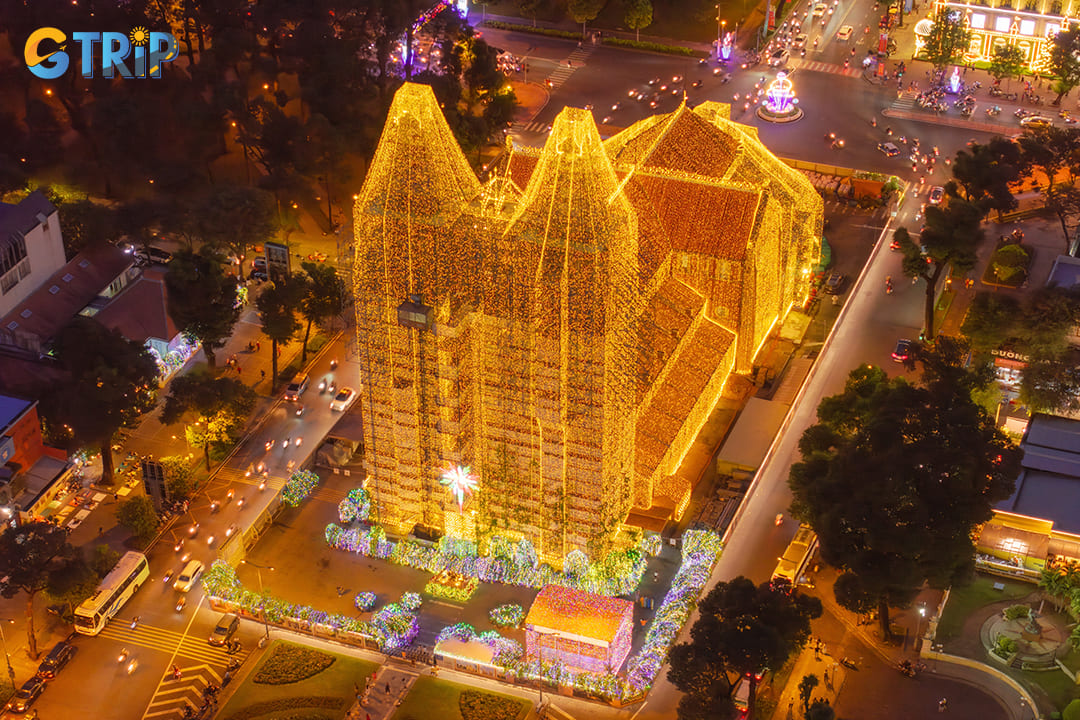
You should remember essential tips to enhance your visit to the Notre Dame Cathedral Basilica of Saigon
Frequently Asked Questions about Notre Dame Cathedral Basilica of Saigon
Here are some frequently asked questions about the Notre Dame Cathedral Basilica of Saigon, along with their answers:
Is the cathedral open to tourists?
The cathedral is currently closed to tourists for restoration, but it remains open for the faithful to attend daily Mass. You can still view the exterior and take photos outside.
Can I take photos inside the cathedral?
While the cathedral is currently closed for interior visits, you can take photos of the exterior. When it reopens, photography inside is generally allowed for personal use, but it's best to check with cathedral staff for any specific restrictions.
Is there an entrance fee?
There is no entrance fee to visit the cathedral's exterior. However, donations are appreciated to support its upkeep.
Can I attend a mass if I don't speak Vietnamese?
Yes, you can attend a Mass even if you don't speak Vietnamese. Participating in the universal aspects of the Mass, such as gestures and hymns, can be a meaningful experience. An English Mass is also available on Sundays at 9:30 AM.
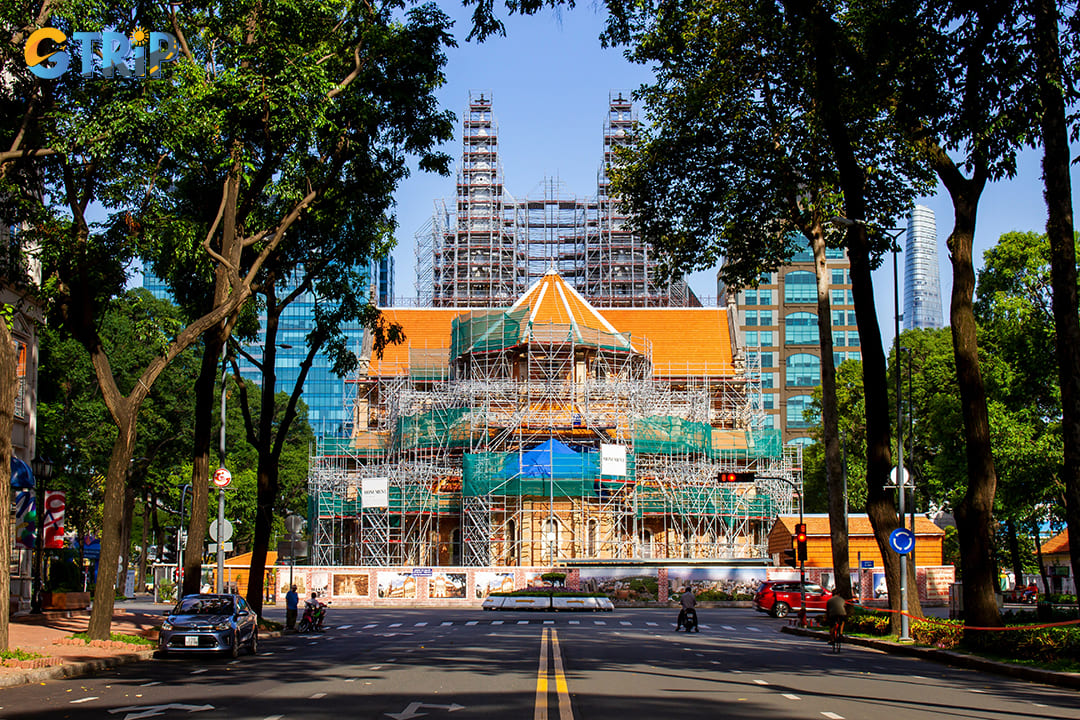
The cathedral is currently closed to tourists for restoration
The Notre Dame Cathedral of Saigon is a timeless symbol of Ho Chi Minh City’s rich cultural and architectural heritage. Its striking design, spiritual significance, and central location make it a must-see landmark for anyone exploring the city. Surrounded by other historic sites like the Saigon Central Post Office and the Opera House, it offers a deeper look into Vietnam’s colonial past and vibrant present. To truly experience the essence of the city, book a tour with GTrip - Vietnam Travel Agency and let our local experts guide you through the stories, sights, and hidden gems of Ho Chi Minh City.

